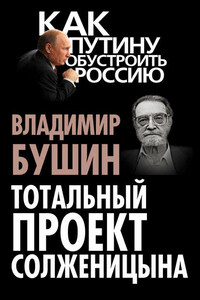Irksome as they were, the misadventure of Iosip Grigor’yevich Nepea did not really bear comparison with the very worst moments in the chaotic history of diplomacy. Nepea, a Russian ambassador to the English court of Mary Tudor, was not slain by an Iroquois hatchet (which is what happened to a French envoy in North America in 1646), nor was his hat nailed to his head (the fate of Turkish ambassadors to Vlad the Impaler in the fifteenth century). Nonetheless, his sea voyage from Russia in 1556 was riddled with bad fortune.
‘Contrary winds and extreme tempests of weather’ separated the ships in his convoy soon after their departure from the port of St Nicholas. One crashed into rocks off the Scandinavian coast, while another was forced to put ashore and winter in Norway. His own ship drifted ever northwards and, on 7 November 1556, it was smashed to pieces at Pitsligo Bay in Aberdeenshire. The ambassador survived but he was given a boorish reception by the local Scottish inhabitants. His entire cargo ‘was by the rude and ravenous people of the country thereunto adjoining, rifled [and] spoiled’. When news of the disaster reached the English court, two men, Lawrence Hussie and George Gilpin, were charged with locating the ambassador and escorting him to London.
They found Nepea in Edinburgh on 20 December and immediately arranged for heralds to be sent to the site of the shipwreck. It was hoped that they might persuade the locals to return the plundered goods, but they met with little success. A great deal of wax was turned in, but there was no trace of the falcon, the jewels, or the ‘twenty entire sables, exceeding beautiful, with teeth, ears and claws’ that Nepea had intended to present to the queen.
The ambassador travelled south, and late in February 1557 he approached the English capital. Finally, after months of hardship, a moment of pageantry more befitting his ambassadorial rank was in prospect. A London draper, John Dimmock, witnessed the spectacle of Nepea’s entry into the city. Twelve miles outside the city walls, Dimmock remembered, the ambassador was greeted by eighty eminent merchants, all sporting gold chains. With their liveried servants in tow, they escorted Nepea to a house four miles further down the London road and showered him with gifts of gold, velvet and silk.
The next morning, after taking in a local fox hunt, he was led into town. He was greeted by the eminent Catholic nobleman Viscount Montague, ‘diverse lusty knights, esquires, gentlemen and yeomen’, and another delegation of merchants who presented him with a ‘footcloth of Orient crimson velvet, enriched with gold laces’. They proffered a horse, which Nepea duly mounted and rode to Smithfield, where he was received by the mayor and his aldermen, all dressed in scarlet. With ‘people running plentifully on all sides’, they rode together towards the ambassador’s well-appointed lodgings in Fenchurch Street.
There were many visitors to these ‘richly hanged and decked’ rooms over the next three months. Bishops and government ministers called for ‘secret talks and conferences’, and London society was regularly to be seen ‘feasting and banqueting him right friendly’. Nepea was shown ‘the most notable and commendable sights’ in the capital, from St Paul’s, to the Guildhall, to the Tower of London. On 25 March he was finally granted an audience with Queen Mary and her husband, Philip II of Spain, at Westminster. After meeting the Lord Chancellor and the Lord Privy Seal, Nepea presented their majesties with the few sables he had managed to salvage from the shipwreck, and read the letter of greeting sent by his master, Ivan IV.
After enjoying a ‘notable supper garnished with music’ arranged by the city’s merchants on 28 April, Nepea began to prepare for his homeward journey. On 3 May, ‘after many embracements and diverse farewells, not without expressing of tears’, he set sail aboard the Primrose Admiral, headed for Gravesend. He carried with him ‘certain letters tenderly conceived’ from the king and queen, and a fine haul of gifts: for himself, a gold chain and some gilt flagons; for the tsar, scarlet, violet, and azure cloth, and a male and female lion. Of inestimably greater value were the tales he took home and the impression he left behind.














